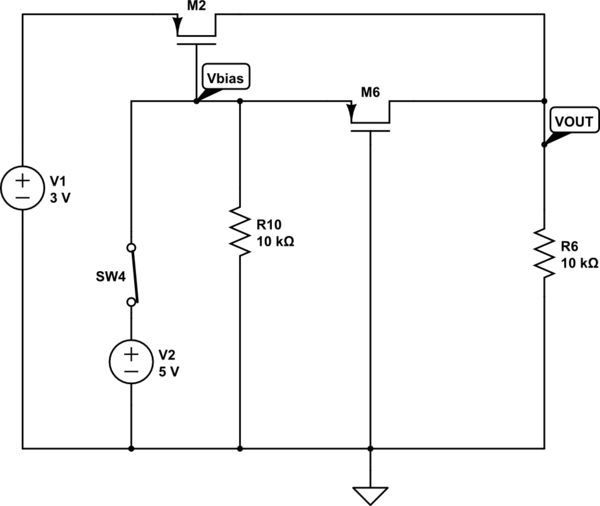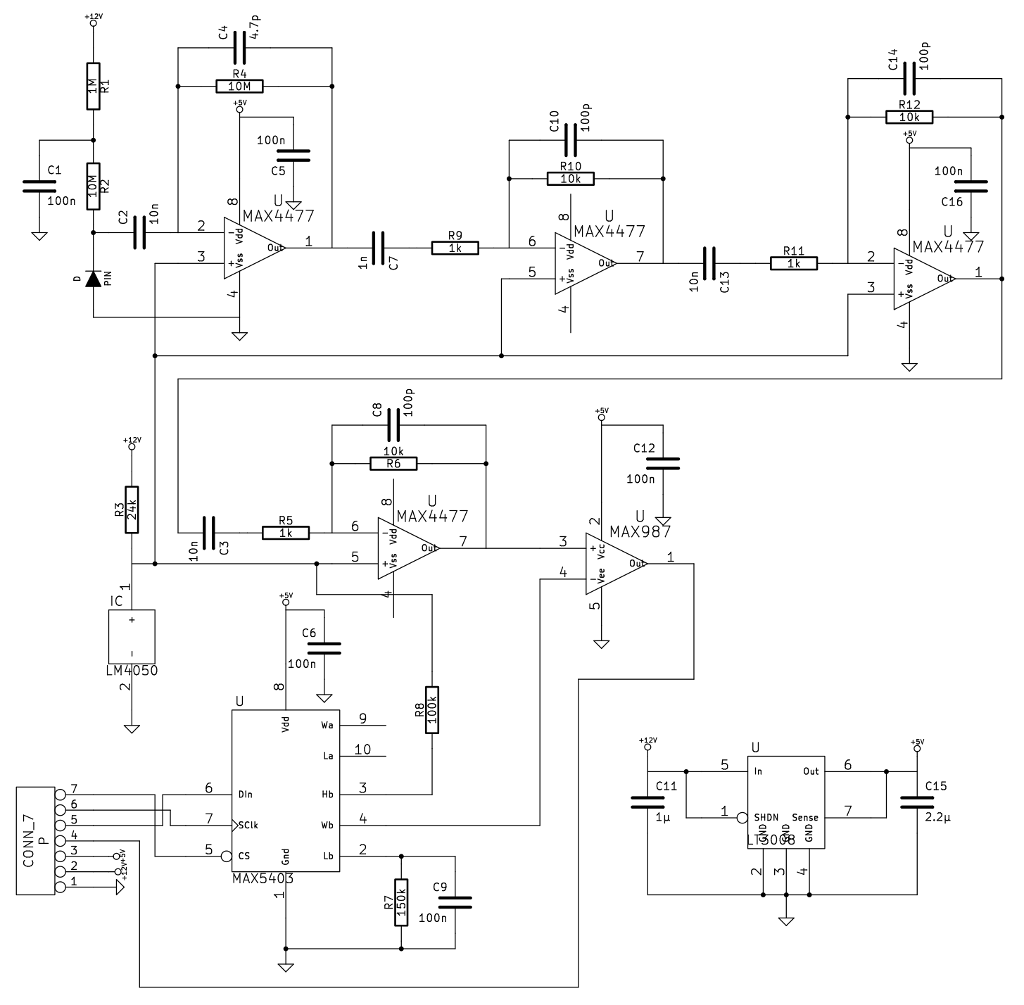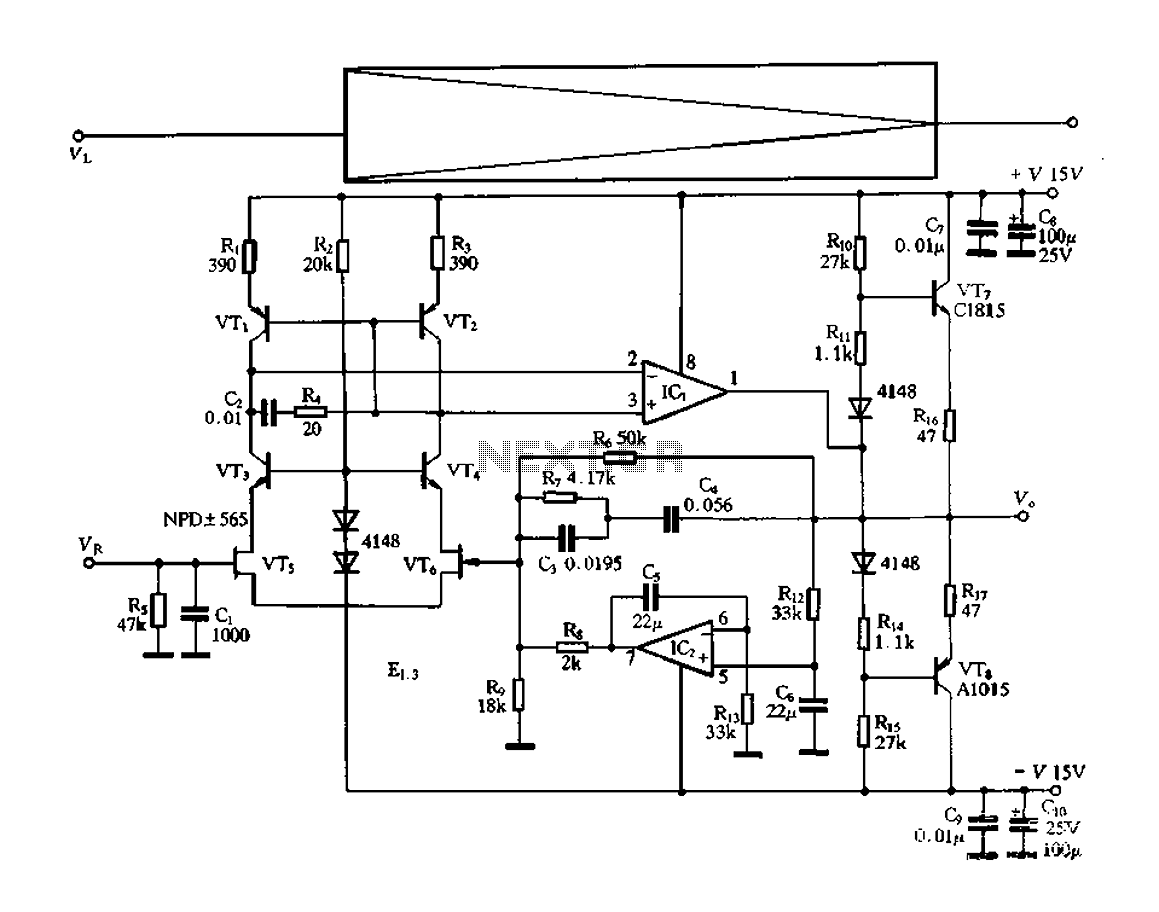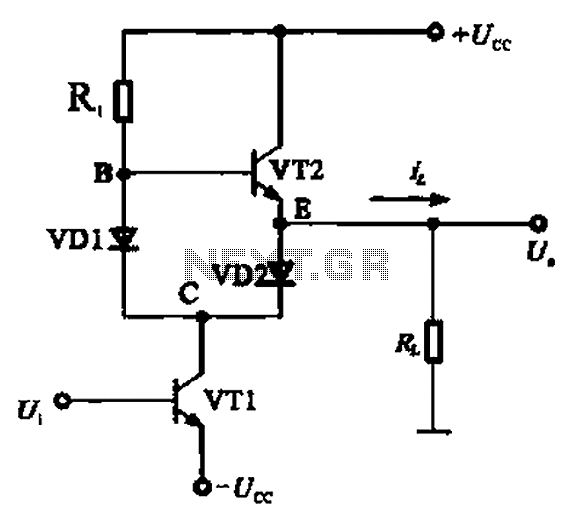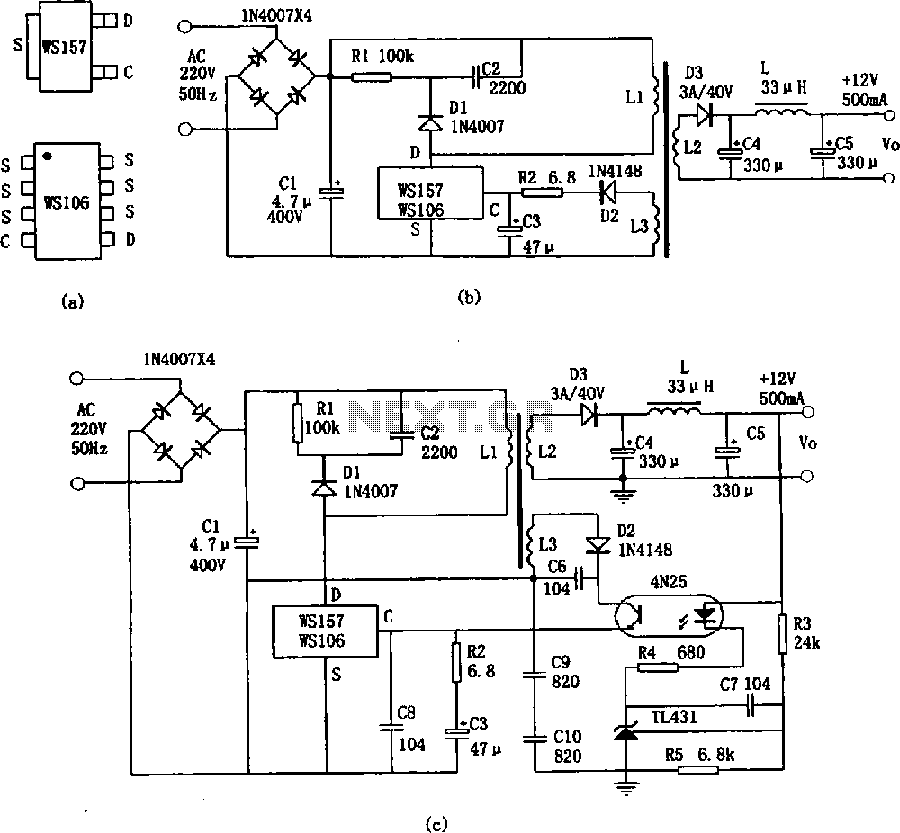
IN4148 Silicon Epitaxial Planar Switching DIODE

This simple diode modulator delivers excellent results when used for high percentage modulation at low signal levels. Constants are shown for a carrier frequency of about 10 MHz, but with a suitable tank, the circuit will yield good results at any frequency where the diode acts as an effective switch. A diode (1N4148) is utilized as a temperature sensor. IC2 is an A/D converter with BCD output. A reference voltage set by R7 is applied to the positive input of IC2. As the temperature increases, the voltage across the temperature sensor resistance decreases, which in turn increases the differential input voltage. The circuit provides an unambiguous LED bar readout indicating positive or negative values with steps of 0.1%. The reference frequency is multiplied by PLL IC1 and divider IC9 to output 64 times the reference frequency, which is then gated by dividing the measured frequency by 32 in IC8, resulting in the output frequency being the reference frequency minus the measured frequency. IC2 counts 1024 pulses. The 1N4148 is a silicon epitaxial planar switching diode with a reverse voltage rating of 75V. The circuit below illustrates a simple voltage-controlled oscillator (VCO) coupled to instrumentation via an optoisolator, designed to measure high voltages. The output of the optocoupler is a phototransistor.
The described circuit features a diode modulator that effectively modulates signals at low levels, making it suitable for applications requiring high percentage modulation. The 1N4148 diode serves dual purposes: as a modulator and as a temperature sensor, providing a direct relationship between temperature variations and modulation characteristics. The A/D converter (IC2) processes the analog voltage generated by the temperature sensor, converting it to a binary-coded decimal (BCD) output for further digital processing.
The reference voltage established by resistor R7 is critical for accurate temperature measurement, as it sets the baseline against which temperature-induced voltage changes are evaluated. The temperature sensor's resistance decreases with increasing temperature, leading to a rise in differential input voltage at IC2, which is crucial for the precise operation of the A/D conversion process.
The output display utilizes an LED bar graph to provide a clear visual representation of temperature readings, allowing for easy interpretation of data. The modulation frequency is managed by a phase-locked loop (PLL) in IC1, which stabilizes the reference frequency and enhances the circuit's performance. The subsequent division and gating processes ensure that the output frequency is accurately measured and displayed, reflecting the modulation characteristics effectively.
The voltage-controlled oscillator (VCO) included in the circuit is vital for generating variable frequencies based on the input conditions, thereby enabling the measurement of high voltages through the optoisolator. The optocoupler provides electrical isolation between the high-voltage measurement circuit and the low-voltage control circuitry, enhancing safety and reliability in the overall design. The output from the optocoupler, a phototransistor, allows for further processing and interfacing with other circuit components or systems, ensuring versatility in application.
This comprehensive approach to modulation and measurement creates a robust circuit capable of delivering precise and reliable performance across a range of frequencies and conditions.This simple diode modulator delivers excellent results when used for high percentage modulation at low signal levels. Constants are shown for a carrier frequency of about 10 MHz, but, with a suitable tank, the circuit will give good results at any frequency at which the diode approximates a good swi.
A diode (IN4148) is used as a temperature senso r. IC2 is an A/D converter with BCD output. A reference voltage set by R7 is applied to the positive input of IC2. As the temperature increases, the voltage across the temperature sensor resistance decreases. This increases the differential input voltag. The circuit provides unambiguous LED + or - bar readout with steps of 0. 1%. The reference frequency is multiplied by the PLLIC1 and divider IC9 to output 64 x F (ref) and this is then gated by dividing F (measure) by 32 in IC8 thus is F (ref) -(measure) then IC2 counts 1024 pulses. Should the count. IN4148 is a silicon epitaxial planar switching diode. The reverse voltage is 75V. This circuit bellow shows a simple voltage-controlled oscillator (VCO), coupled to your instrumentation by an optoisolator, the function for measure high voltages.
The optocoupler’s output is a p. 🔗 External reference
The described circuit features a diode modulator that effectively modulates signals at low levels, making it suitable for applications requiring high percentage modulation. The 1N4148 diode serves dual purposes: as a modulator and as a temperature sensor, providing a direct relationship between temperature variations and modulation characteristics. The A/D converter (IC2) processes the analog voltage generated by the temperature sensor, converting it to a binary-coded decimal (BCD) output for further digital processing.
The reference voltage established by resistor R7 is critical for accurate temperature measurement, as it sets the baseline against which temperature-induced voltage changes are evaluated. The temperature sensor's resistance decreases with increasing temperature, leading to a rise in differential input voltage at IC2, which is crucial for the precise operation of the A/D conversion process.
The output display utilizes an LED bar graph to provide a clear visual representation of temperature readings, allowing for easy interpretation of data. The modulation frequency is managed by a phase-locked loop (PLL) in IC1, which stabilizes the reference frequency and enhances the circuit's performance. The subsequent division and gating processes ensure that the output frequency is accurately measured and displayed, reflecting the modulation characteristics effectively.
The voltage-controlled oscillator (VCO) included in the circuit is vital for generating variable frequencies based on the input conditions, thereby enabling the measurement of high voltages through the optoisolator. The optocoupler provides electrical isolation between the high-voltage measurement circuit and the low-voltage control circuitry, enhancing safety and reliability in the overall design. The output from the optocoupler, a phototransistor, allows for further processing and interfacing with other circuit components or systems, ensuring versatility in application.
This comprehensive approach to modulation and measurement creates a robust circuit capable of delivering precise and reliable performance across a range of frequencies and conditions.This simple diode modulator delivers excellent results when used for high percentage modulation at low signal levels. Constants are shown for a carrier frequency of about 10 MHz, but, with a suitable tank, the circuit will give good results at any frequency at which the diode approximates a good swi.
A diode (IN4148) is used as a temperature senso r. IC2 is an A/D converter with BCD output. A reference voltage set by R7 is applied to the positive input of IC2. As the temperature increases, the voltage across the temperature sensor resistance decreases. This increases the differential input voltag. The circuit provides unambiguous LED + or - bar readout with steps of 0. 1%. The reference frequency is multiplied by the PLLIC1 and divider IC9 to output 64 x F (ref) and this is then gated by dividing F (measure) by 32 in IC8 thus is F (ref) -(measure) then IC2 counts 1024 pulses. Should the count. IN4148 is a silicon epitaxial planar switching diode. The reverse voltage is 75V. This circuit bellow shows a simple voltage-controlled oscillator (VCO), coupled to your instrumentation by an optoisolator, the function for measure high voltages.
The optocoupler’s output is a p. 🔗 External reference
